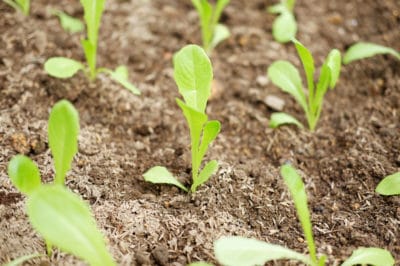Planting
Advantages of planting lettuce sproutings include:
- Early Season Start
- Space requirements always met
- Place them where you want them
Plant lettuce seeds in trays or containers indoors 3-4 weeks before the last frost. If planting in trays broadcast the seeds across a tray filled with all-purpose potting soil. In a couple of weeks, you can thin sprouts that are crowding others leaving the strongest ones to grow.
4-inch garden pots work excellent if you don’t want the hassle of thinning or separating them. Place 2-3 seeds in each pot. When they sprout, thin them to one per pot to allow them more space. Sprouts started in trays may be smaller to start off with. The deeper the container, the more room the roots have to spread out. Once in the garden, they will all grow into healthy lettuce plants.
Acclimate
Always acclimate your sprouts before putting them outside. Without acclimation, they will wilt beneath intense sun or break from wind exposure. Start bringing them outside each day, increasing the amount of time they are exposed to light, wind, and temperature fluctuations. Increase their outside time over the course of 1-2 weeks depending on whether they show signs of stress.
Transplant Care
When all danger of a hard freeze has passed, you can transplant lettuce sprouts to the garden. Your sprouts may be between 3-5 inches tall at this point, they can be transplanted at any stage once they’ve grown two healthy sets of leaves.
Prepare an area in the garden by loosening the soil. Add amendments such as compost to feed the plant through the season. Compost can be applied in a 1-inch layer across the top of the soil, or throw a handful into each transplant hole for a more direct source of nutrients.
Use your fingers or a spade to delicately remove the sprouts from their containers. Try not to damage the roots system as much as possible, some breakage is okay. Make sure there is no compaction of soil around the sprout roots, use your fingers to break up any clumps and free any roots that appear trapped. Once planted you want those roots to spread out quickly bringing in more nutrients and water.
Place each lettuce sprout into a hole dug with your hands or a spade. Fill in the hole with soil to the same level that it was at in the container. Press the soil gently down around the roots to stabilize the plant and get rid of air pockets underground. Water them in thoroughly.
